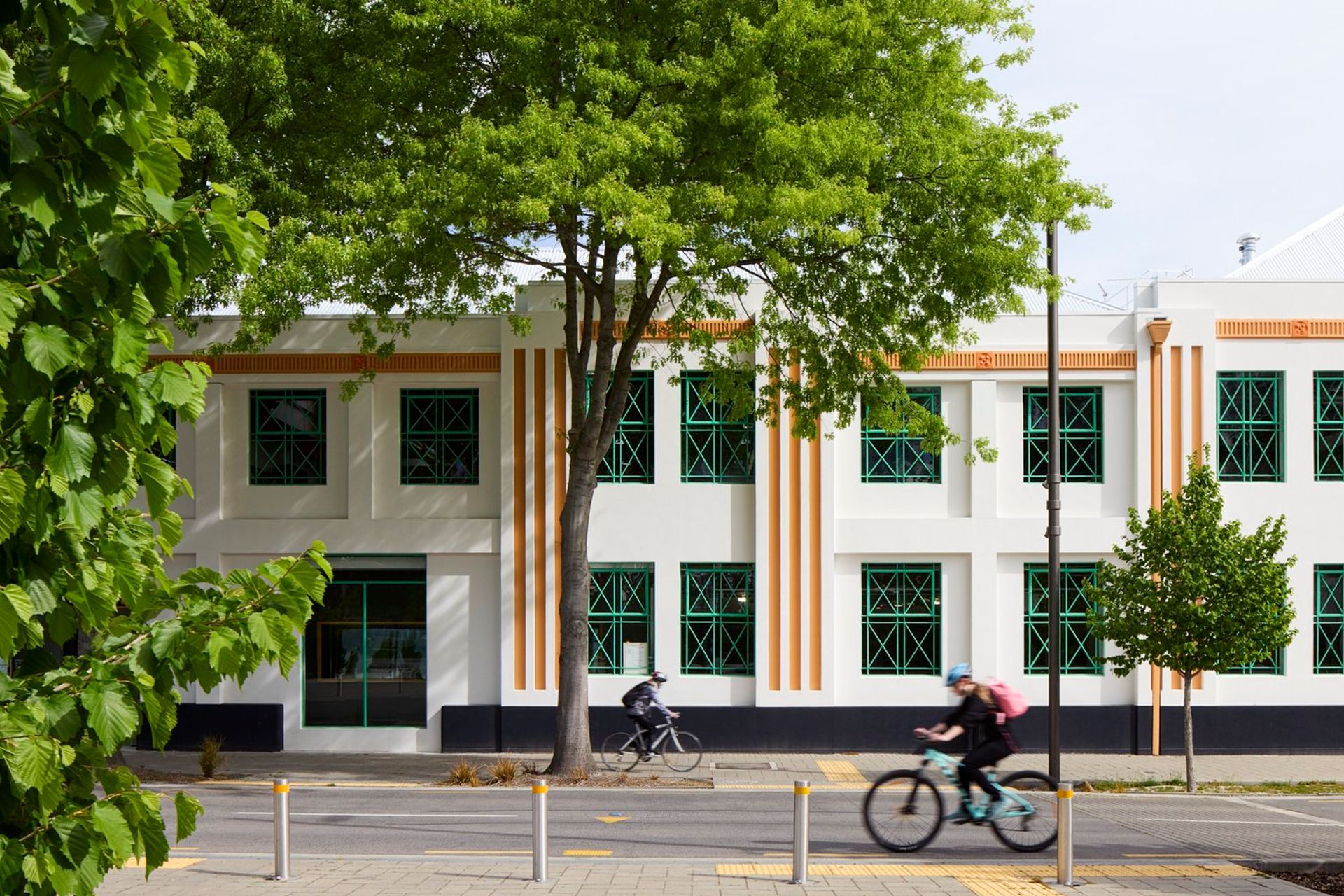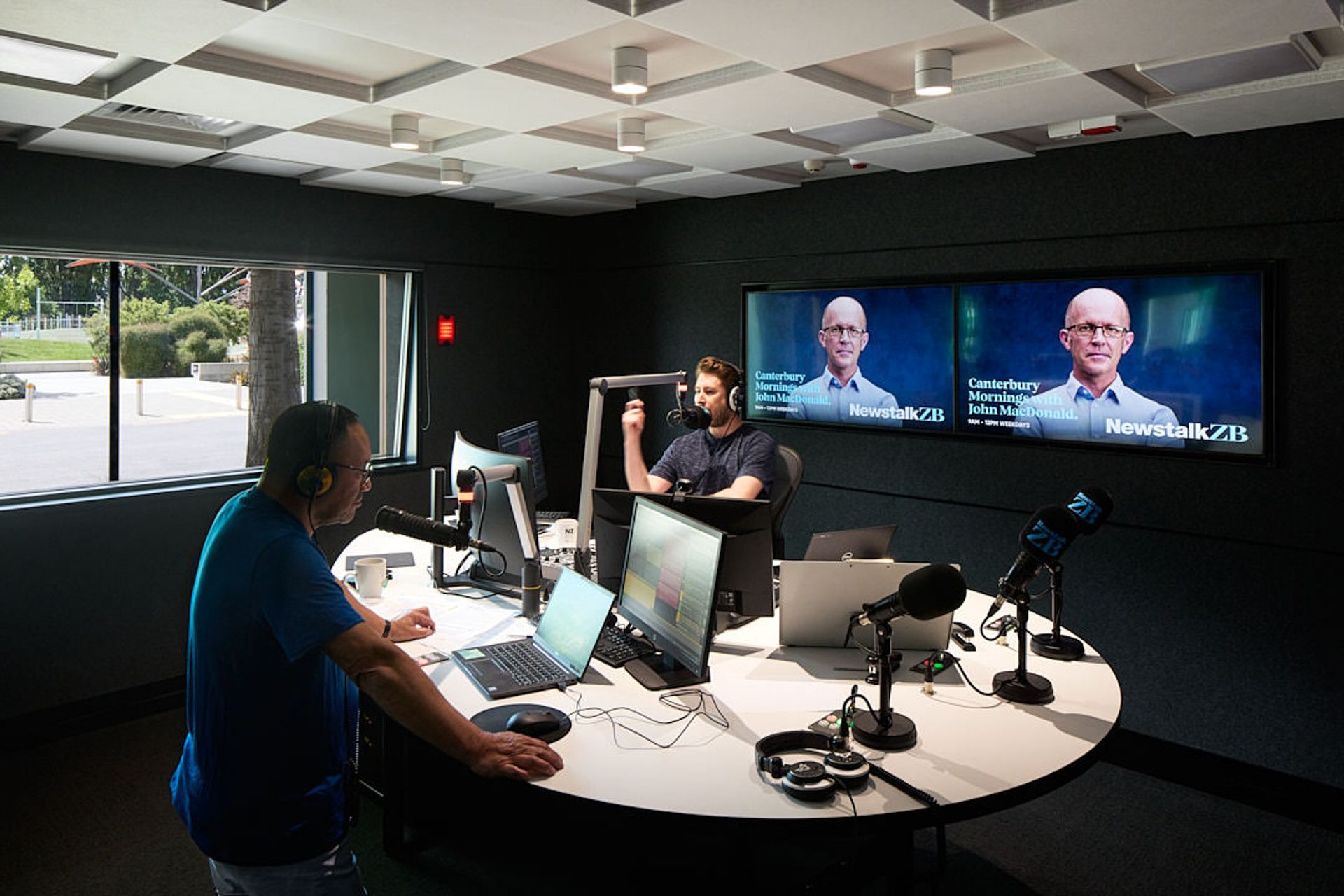After the tremor: project managing a sympathetic restoration with an agile attitude in Christchurch
Written by
16 September 2024
•
5 min read

The project for NZME studio (New Zealand Media & Entertainment) not only provided an opportunity to relocate from its long-standing location but also allowed the company to reimagine its work environment to reflect its current business operations and values. ArchiPro speaks with Paul Miller, Founder of PJM Project Management, about what it takes to spearhead a project from rubble to fit-for-purpose.
“We are a safe pair of hands. We provide total project management, overseeing time, cost, quality and relationships,” explains Miller. “At PJM, we take a complex delivery process and distil it down so the clients can step in and out of the project at their leisure— adding enthusiasm in areas they are knowledgeable and passionate about while avoiding the stress, pressure and time of the other project requirements.”
Since 2008, PJM Project Management has delivered projects in the government, commercial, residential, hospitality, and community sectors. With over 25 years of experience, Paul Miller is a sought-after project manager, especially for complex, high-risk projects such as NZME.

A modern vision for a historic resurgence
Developed by Box 112 and Three Sixty Architecture, the primary objective for NZME was clear: to create a workspace that housed state-of-the-art broadcasting studios and embraced an open-plan, agile working environment. "Having been in an old building for nearly three decades, the relocation allowed the client to modernise their office and broadcasting facilities," says Miller.
This vision came with its challenges, especially given the historic nature of the building. "The challenges were creating studios, with their acoustic and broadcasting requirements, within the context of a heritage building,” says Miller. “The client wanted to retain the charm and heritage of the building but also have a modern fit-out. There were seismic and acoustic considerations, services, and constraints to access within the building," Miller adds.
Integrating modern broadcasting facilities into a building with such historical significance required careful planning and execution. "We were trying to do a higher level of fit-out (with regards to acoustic broadcasting and performance requirements) than a typical office fit-out," Miller added.
We provide total project management, overseeing time, cost, quality and relationships. We take a complex delivery process and distil it down so the clients can step in and out of the project at their leisure.


Preserving the past, embracing the future
One of the project's standout features is the balance between preserving the building's historical character and introducing modern elements. "In the fit-out, we’ve tried to keep the integral structure, like the timber floors, ornate windows, the beams and exposed ceiling. We wanted to keep the industrial charm of the building,” says Miller.
This respect for the building's heritage is further evident in the approach of the new broadcasting studios and booths. "The broadcasting studios and booths are a light touch, so they're floating—they're not connected to the building.”
Miller notes, “Part of that is for acoustic reasons, and the other is that it’s a light touch, so it’s easy to remove in future, and the building would keep its charm.”
The project also aimed to make the building interactive for the public. Passersby can see the broadcaster’s studio, creating a modern and engaging connection between the public and the media. "We wanted to show the craft of broadcasting with a studio that people can view from the street. The public can walk past the front window and wave at the broadcasters," says Miller.

Collaboration and innovation
According to Miller, the NZME project was a collaboration and commitment to preserving local heritage while meeting the needs of a modern business. "The result of this project is about going the extra mile—the developer [Box 112], going on a journey with their tenants and the Christchurch Council in restoring a building severely damaged in the earthquakes and striving to keep some of the city’s character,” says Miller.
“Honestly, it would have been simpler to put a bulldozer through it and put a brand-new glass building there, and much of Christchurch has had to make this decision. So, this restoration is special."
The successful completion speaks to the effectiveness of the PJM team, which delivered the project on time and within budget. "As the project managers, we managed the relocation into the new building. That included developing the client brief and room data sheets, design management, and ensuring that the design complied with the budget,” says Miller. “We also coordinated with the broadcasting technical staff to ensure that the building would function from a broadcasting perspective."

A future-proofed landmark for Christchurch
In a city where new buildings are becoming the norm, PJM has ensured a state-of-the-art facility and contributed to the broader narrative of Christchurch’s restoration.
"Because of the earthquake, many character buildings were sadly lost in Christchurch,” reflects Miller. “This project has resorted a landmark to the cityscape and stands proudly in respect to New Zealand’s history and our ability to withstand and rebuild.”
Discover how PJM Project Management can help with your project today on ArchiPro.
